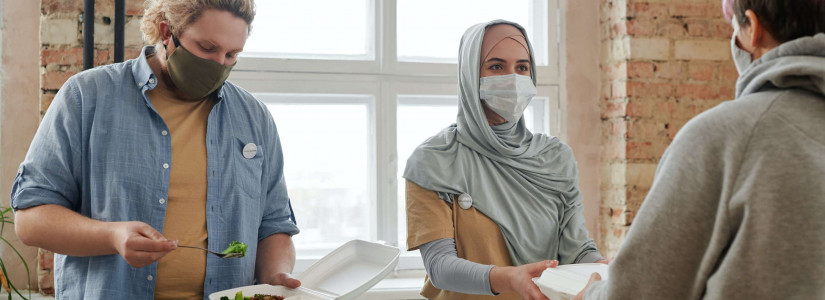New CDC Guidance Illustrates How COVID-19 Can Spread Through the Air
It is understandable if your head is spinning with all of the changing guidelines regarding the COVID-19 virus. Just Monday, the Centers for Disease Control and Prevention (CDC) officially announced that they believe that the deadly virus is airborne. Here is what you need to know about this new development and what steps you can take to protect yourself.
New Guidance
When the virus first made its appearance, many medical professionals erroneously believed that it was spread through infected surfaces. This was evident in disinfectant wipes and sprays flying off of grocery shelves everywhere. As more research comes to light, it is becoming more clear that the virus is being spread through the air.
The primary mode of transmission is still believed to be through respiratory droplets that are passed from an infected individual. However, the new guidance alerts people that airborne transmission is also possible. This means that small particles of the virus can stay in the air for up to hours and then be inhaled, causing the infection to take root in the body.
As part of the new guidance, the CDC is also warning people that these small airborne particles can also travel farther than the previously believed six feet of distance. This transmission is most likely to happen when infected individuals are talking, shouting, and singing. The possibility of transmission is also more likely to occur in indoor areas with poor ventilation.
How the Virus Spreads Through Aerosols
As a person talks, exhales, or coughs, tiny droplets are released into the air. These tiny droplets are so minuscule that they have the capability of being able to travel through the air and linger in poorly ventilated areas. If you happen to inadvertently inhale these infected droplets, there is a chance that you will become ill with the virus.
While scientists have always believed that you could become infected from breathing in infected droplets, it was thought that these droplets could not travel more than six feet or survive for a significant period of time in the air. It is now thought that these microdroplets can potentially travel across an entire room, raising the risk that you may become infected even without interacting with the positive person.
Time and Viral Load Exposure
The two most predictive factors that lead to infection are time and viral load exposure. A short exposure to the particles is far less likely to cause infection than a prolonged exposure. This helps to explain why simply walking through the grocery store to pick up essentials is not leading to massive amounts of transmission. A brief exposure to an infected individual is not likely to make you sick. This is largely because the viral load exposure is not as great.
The risk is also higher when in an indoor setting. When you are outside, the aerosols evaporate into the air and scatter more quickly, making it less likely that the concentration of the infected particles is enough to make you sick.
How to Best Protect Yourself
Now that you know the new information regarding transmission risks, what can you do to further reduce your risk of coming down with the virus? This news simply emphasizes the importance of wearing a mask. Because it is now believed that the aerosolized droplets may linger in poorly ventilated rooms for up to several hours, the importance of wearing a facial covering cannot be overstated.
It is also more important than ever to practice social distancing. The farther away that you are from an infected individual, the less likely that it will be that you breathe in the contagious aerosolized droplets. It is also prudent to avoid crowded indoor spaces, especially if you have reason to believe that the ventilation is not up to par. Indoor bars are particularly dangerous situations, especially if the venue does not enforce social distancing protocols.
And, as always, frequent and proper handwashing is a cornerstone of keeping yourself healthy in a variety of situations.
It is critical to remember that COVID-19 is a novel virus. This means that scientists are not yet equipped to completely understand how this virus works. Staying on top of the latest news and research will empower you to make the best decisions for the health of your family.











